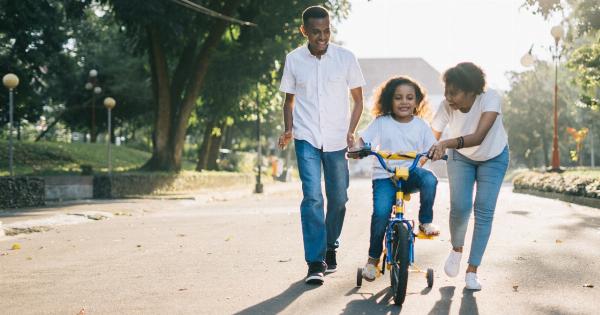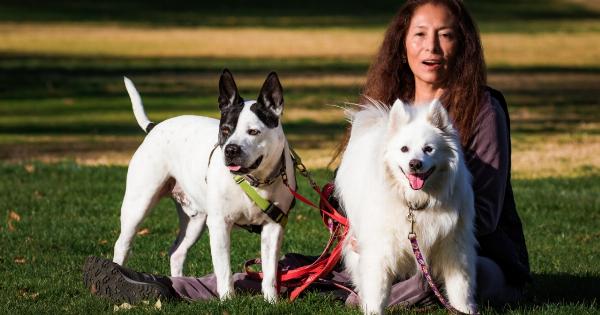Sexual harassment is a pervasive issue faced by many people, but it can be particularly damaging to young people.
Youth are still learning about themselves and their boundaries, and being subjected to sexual harassment can hinder their growth and development. Knowing what forms of sexual harassment are common among youth can help individuals, schools, and communities take measures to prevent sexual harassment and support those who have experienced it.
Here are the top 30 forms of sexual harassment experienced in youth:.
1. Comments or jokes about appearance or clothing
One common form of sexual harassment experienced by youth is receiving comments or jokes about their appearance or clothing. This could include comments about someone’s body, hair, or clothing choices that are sexual in nature.
2. Unwanted physical contact
Unwanted physical contact is another common form of sexual harassment experienced by youth. This could include touching, groping, or other forms of physical contact that make someone feel uncomfortable.
3. Sexual gestures or movements
Sexual gestures or movements, such as licking one’s lips or making sexually suggestive motions, can also be a form of sexual harassment experienced by youth.
4. Catcalling or whistling
Being catcalled or whistled at on the street is a form of sexual harassment that can make young people feel unsafe and uncomfortable.
5. Sending unwanted sexual messages
With the rise of social media and texting, sending unwanted sexual messages has become a common form of sexual harassment experienced by youth.
6. Spreading sexual rumors or gossip
Spreading sexual rumors or gossip about someone can be a form of sexual harassment that damages their reputation and relationships with others.
7. Continually asking for sex or sexual favors
Continually asking for sex or sexual favors can be a form of sexual harassment that puts pressure on young people and can make them feel uncomfortable or threatened.
8. Exposing oneself or making sexually explicit comments
Exposing oneself or making sexually explicit comments can be a form of sexual harassment that makes young people feel violated and uncomfortable.
9. Unwanted sexual advances or propositions
Unwanted sexual advances or propositions, such as asking someone on a date after they have said no or trying to kiss them without consent, can be a form of sexual harassment experienced by youth.
10. Stalking or following someone
Stalking or following someone can be a form of sexual harassment that makes young people feel scared and unsafe.
11. Making sex a condition for a job or opportunity
Using sex as a condition for a job or opportunity can be a form of sexual harassment that takes advantage of young people and their desires for success.
12. Offering rewards in exchange for sex
Offering rewards in exchange for sex can be a form of sexual harassment that puts pressure on young people and can make them feel uncomfortable or threatened.
13. Pressuring someone to have sex or engage in sexual activity
Pressuring someone to have sex or engage in sexual activity can be a form of sexual harassment that makes young people feel uncomfortable or scared.
14. Making unwanted sexual advances while under the influence of drugs or alcohol
Making unwanted sexual advances while under the influence of drugs or alcohol can be a form of sexual harassment that takes advantage of young people who are vulnerable due to their intoxication.
15. Photographing or filming someone without their consent
Photographing or filming someone without their consent can be a form of sexual harassment that violates their privacy and makes them feel uncomfortable.
16. Touching someone without their consent
Touching someone without their consent can be a form of sexual harassment that violates their boundaries and makes them feel uncomfortable.
17. Making unwanted sexual comments or jokes
Making unwanted sexual comments or jokes can be a form of sexual harassment that makes young people feel uncomfortable or embarrassed.
18. Threatening someone with sexual violence
Threatening someone with sexual violence can be a form of sexual harassment that makes young people feel scared and unsafe.
19. Using sexual language to describe someone’s body or behavior
Using sexual language to describe someone’s body or behavior can be a form of sexual harassment that objectifies young people and makes them feel uncomfortable.
20. Sending sexually explicit materials
Sending sexually explicit materials, such as nude photos or videos, can be a form of sexual harassment that violates someone’s privacy and makes them feel uncomfortable or ashamed.
21. Sexually harassing someone online
Sexually harassing someone online, such as through social media or messaging apps, can be a form of sexual harassment that makes young people feel unsafe and violated.
22. Hugging or other physical contact without consent
Hugging or other forms of physical contact without consent can be a form of sexual harassment that violates someone’s boundaries and makes them feel uncomfortable.
23. Making sexual comments about someone’s race or ethnicity
Making sexual comments about someone’s race or ethnicity can be a form of sexual harassment that is particularly damaging and offensive.
24. Commenting on or touching someone’s underwear or intimate clothing
Commenting on or touching someone’s underwear or intimate clothing can be a form of sexual harassment that makes young people feel violated and uncomfortable.
25. Using sexually explicit language in the workplace or school
Using sexually explicit language in the workplace or school can be a form of sexual harassment that creates a hostile environment for young people and interferes with their ability to learn or work.
26. Offering someone drugs or alcohol in exchange for sex or sexual favors
Offering someone drugs or alcohol in exchange for sex or sexual favors can be a form of sexual harassment that takes advantage of young people who may be struggling with addiction or vulnerability.
27. Making sex-based insults or jokes
Making sex-based insults or jokes can be a form of sexual harassment that creates a hostile environment for young people and undermines their self-esteem and confidence.
28. Making unwanted sexual advances in public places
Making unwanted sexual advances in public places, such as on public transportation or in a park, can be a form of sexual harassment that makes young people feel scared and unsafe.
29. Controlling someone’s access to resources or opportunities based on sex
Controlling someone’s access to resources or opportunities based on sex, such as denying someone a promotion or opportunity because of their gender, can be a form of sexual harassment that perpetuates gender inequality and harms young people’s careers and futures.
30. Coercing someone into sexual activity through threats or manipulation
Coercing someone into sexual activity through threats or manipulation can be a form of sexual harassment that makes young people feel powerless and trapped.
Conclusion
Sexual harassment is a serious issue that affects many young people. By knowing what forms of sexual harassment are common among youth, we can take steps to prevent it and support those who have experienced it.
Everyone has the right to feel safe and respected, and we must work together to ensure that young people can grow and develop without fear of harassment or violation.


























